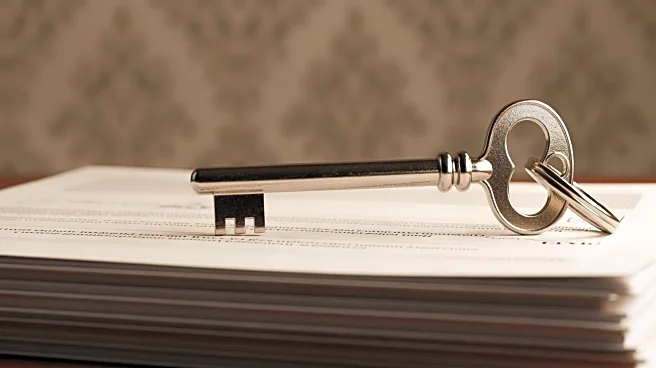What's Happening?
A new study published in Physical Review Letters reveals a theoretical model of a wormhole connecting two entangled black holes, described as a 'Einstein-Rosen caterpillar.' This model challenges traditional
views of wormholes as smooth tunnels, instead presenting them as long, bumpy structures. The research, conducted by scientists from the U.S. and Argentina, used computer simulations to scramble the quantum connection between black holes, resulting in a complex wormhole geometry. This discovery supports the ER=EPR conjecture, suggesting that quantum entanglement and wormholes are equivalent.
Why It's Important?
The findings have significant implications for theoretical physics, particularly in addressing the firewall paradox, which posits that the interior of a black hole could be unstable. The study suggests that even chaotic quantum states can result in stable wormholes, supporting the idea that quantum mechanics can influence spacetime geometry. This research could pave the way for new insights into the nature of black holes and the fundamental laws of physics, potentially impacting future studies in quantum mechanics and general relativity.
Beyond the Headlines
The discovery of the caterpillar-like wormhole challenges existing theories about the nature of black holes and their interiors. It raises questions about the relationship between quantum mechanics and gravity, and how these forces interact at cosmic scales. The study's implications extend to the broader understanding of spacetime and could influence future research in quantum computing and simulations, as scientists explore the practical applications of these theoretical models.













